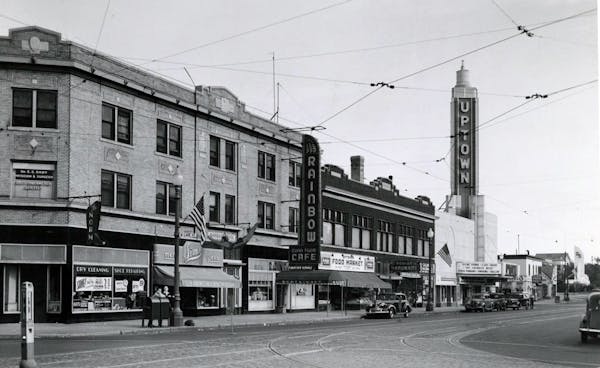Why is Minnesota more liberal than its neighboring states?
Listen and subscribe to our podcast: Via Apple Podcasts | Spotify | Stitcher
One by one on election night in 2016, Minnesota's neighboring Midwestern states turned red, including Wisconsin, which hadn't gone Republican since the Ronald Reagan years.
But Minnesota — by a scant 44,765 votes — voted for Hillary Clinton over Donald Trump, continuing its long streak of picking Democrats for president. The last time the state backed a Republican for president was Richard Nixon in 1972.
Minnesota's progressive streak struck Heidi Kuschel, who wanted to know why Minnesota leaned more liberal than its neighbors in the Midwest. She turned to Curious Minnesota, the Star Tribune's community reporting project that answers questions from readers.
"We are kind of outliers in the Midwest in politics, laws and practices," she said. "I was curious how that came to be?"
The answer is a mix of history, culture and shifting demographics.
Steven Schier, a retired Carleton College political science professor, notes that Minnesota was settled largely by churchgoing Scandinavians and Germans, who were "moralistic and public regarding" and tended to agree with the notion that government had a role to play when it's in the best interest of everyone. That ethos has persisted in the state's consistently high voter turnout over the years, and it has frequently benefited left-leaning candidates in elections.
A politically shrewd merger between the Democratic Party and the more left-wing Farmer-Labor Party created the Democratic-Farmer-Labor Party (DFL) in 1944, giving a home to liberal voters and helping to solidify a progressive streak in the state.
The party united the labor movement, from urban trade workers to rural miners, with farmers and brought about a new generation of prominent liberal state leaders.
Among them was Hubert Humphrey, the face behind the merger and a charismatic political science professor who would go on to become a U.S. senator and vice president. But Orville Freeman, who became the state's first DFL governor in 1954, was the organizational force behind the fledgling party, bringing academics, feminists and veterans into the coalition and hosting events that spread the new party's base statewide.
"You had the partnership of the charismatic ideologue and this organizational genius, and that really gave the DFL a good institutional foundation," said Iric Nathanson, a Twin Cities columnist who writes about Minnesota history.
But in recent years, demographic changes and shifts in the opposition party have also been a factor, Schier added. The Republican Party, both nationally and in Minnesota, has become "more uniformly conservative and rural in its base," he said. That opened up an opportunity for Democrats in the urban cities and surrounding suburbs, where their base has shifted.
The population in the Twin Cities metro area now makes up a larger share of the state's population than greater Minnesota, which has helped Democrats win in recent national and statewide.
Today, DFLers hold every statewide office in Minnesota. The last Republican to win a statewide election here was former Gov. Tim Pawlenty in 2006.
Modern Republicans in Minnesota, Schier said, "have a really rough time prevailing in state politics beyond the local level where they can win legislative races."
---
If you'd like to submit a Curious Minnesota question, fill out the form below:
Read more Curious Minnesota stories:
Does Minnesota really have the worst winters in the country?
What are the roots of the Minneapolis vs. St. Paul rivalry?
When did wild bison disappear from Minnesota?
Why do electric-vehicle owners pay a surcharge in Minnesota?
Is Minnesota actually more German than Scandinavian?
Why are felons stripped of voting rights, and what other rights do they lose?
How did Minnesota's early settlers make it through the dark, cold winters?
Why do so many Fortune 500 companies call Minnesota home?
![Waste water churns in aeration tanks. ] Mark Vancleave - mark.vancleave@startribune.com * The Metropolitan Wastewater Treatment plant in St. Paul whic](https://arc.stimg.co/startribunemedia/UDK3H6QB5BGUQUTCUKJL6UPRUA.jpg?w=600&h=600&auto=format%2Ccompress&cs=tinysrgb)

